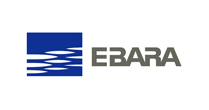
February 16th, 2024
In any building or facility, fire safety is a top priority. A properly functioning fire sprinkler system plays a crucial role in ensuring that the occupants of the building remain safe from potential fire damage. This is where fire pumps and jockey pumps come in handy!
Both jockey and fire pumps may sound similar, but they are two different essential components of a fire protection system. Thus, ensure you understand the difference between these two types of pumps to ensure your building is up to code.
Let’s delve into the specific functions of fire and jockey pumps to help you understand what sets them apart.
Fire pumps supply water to fire suppression systems, such as sprinklers. They maintain an adequate level of water pressure in the system when water demand exceeds the capacity of the water supply.
During a fire emergency, the fire pump automatically starts when the water pressure in the system drops below a certain level. It ensures sufficient water to the sprinkler system to extinguish the fire. Components of fire pumps:
Jockey pumps are small pumps designed to maintain water pressure in a fire protection system during non-emergency scenarios. They maintain a consistent water pressure in the fire pump system, ensuring that the fire pump won’t start unnecessarily. They are essentially a portion of the fire pump’s control system.
Depending on the system’s water demand, jockey pumps start and stop automatically. They are commonly used with large horizontal sprinkler systems and connected to a fire sprinkler system to maintain pressure in the pipes. The role of a jockey pump is to maintain water pressure in a fire protection system during an unnecessary fire pump start.
Fire and jockey pumps are both essential components of fire protection systems, but they have distinct characteristics and different purposes. Here are the key differences between fire pumps and jockey pumps:
Fire pumps are specifically designed to deliver a high volume of water to the fire protection system at a high pressure. They are the primary pumps responsible for supplying water to sprinklers, hydrants, and other firefighting equipment in the event of a fire.
Jockey pumps are designed to maintain consistent water pressure in the fire protection system during non-emergency periods. They prevent frequent on/off cycling of the main fire pump by compensating for small leaks or pressure losses.
Fire pumps start automatically when the pressure in the fire protection system drops below a certain level. They provide a rapid and substantial flow of water to control and extinguish fires. On the other hand, jockey pumps operate intermittently, starting and stopping as needed to maintain the desired pressure in the system.
While fire pumps are high-capacity pumps capable of delivering large amounts of water to meet the demands of firefighting, jockey pumps have a lower capacity than fire pumps. They are designed for continuous operation at lower flow rates to handle minor pressure variations. On the other hand, fire pumps are typically centrifugal pumps designed for efficient water movement.
Fire pumps are larger and more powerful than jockey pump sizing, reflecting their role in handling substantial water flow during firefighting emergencies. Jockey pumps are smaller and more compact than fire pumps, reflecting their role in maintaining system pressure rather than delivering large volumes of water.
Fire protection systems operate fire pumps. They are not intended for regular or frequent operation. They are typically activated only during fire events or system testing. However, jockey pumps are often part of a pressure maintenance system that includes pressure switches and controllers. They are set to start/stop based on pressure thresholds.
Fire pumps can be electrically driven or powered by diesel engines. Diesel-driven fire pumps are common for backup power in case of electrical failures. However, jockey pumps are typically electrically driven and are designed for energy-efficient, low-maintenance operation during periods of system standby.
Both fire and jockey pumps provide adequate water for a building’s fire protection system. While they may appear similar, their function differs. Consider consulting a fire protection professional to ensure fire safety in your building.
john@callaghanpump.com,
eileen@callaghanpump.com,
dan@callaghanpump.com,
sales@callaghanpump.com,
service@callaghanpump.com












